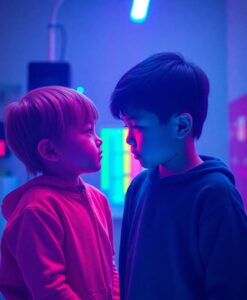The results point to two related processes. Reaction time changes and fewer errors for predictable aliens suggest children are tracking patterns as they go. Recognition of whole triplets improved with age, which ties to developing attention, memory, and the ability to follow task rules. This pattern implies learning here is not purely unconscious; performance depends on how the task asks children to engage and on the cognitive skills they bring to it.

For anyone thinking about early education or inclusive learning design, this work matters because it shows how measurement and goals shape what we call learning. The findings invite questions about how classroom activities might harness moment-to-moment pattern sensitivity while strengthening the cognitive scaffolds that allow children to describe and use what they know. Follow the full article to see how these lab-based insights might inform tools that unfold children’s potential across different ages and abilities.
Abstract
Visual statistical learning (visual SL) is the ability to implicitly extract statistical patterns from visual stimuli. Visual SL could be assessed using online measures, evaluating reaction times (RTs) to stimuli during task performance, and offline measures, which assess recognition of the presented patterns. We examined 96 children aged 3−9 years using a visual SL task that included online and offline measures. In the online phase, children viewed sequences of cartoon aliens presented one at a time, organized into triplets. The task was to press a button to two target stimuli: one predictable (the last alien in the triplet), and one unpredictable (the first in the triplet). In the offline phase, children performed a two-alternative-forced choice task, where they viewed two triplets and selected the one matching the sequence from the online phase. In online measures, we observed a gradual increase in RT for unpredictable stimulus and a slight decrease in RT for predictable stimulus over the experiment, with fewer errors for predictable stimulus, indicating an SL effect. In offline measures, the SL effect was also observed, though less robust: recognition rates for correct triplets exceeded chance level only for triplets containing predictable stimuli. Notably, while online measures remained stable across age, offline recognition rates increased with age, suggesting a link to the development of cognitive functions needed for explicit task performance. We propose that SL is not purely an implicit process but rather an active learning process shaped by experimental task requirements and goal setting.

